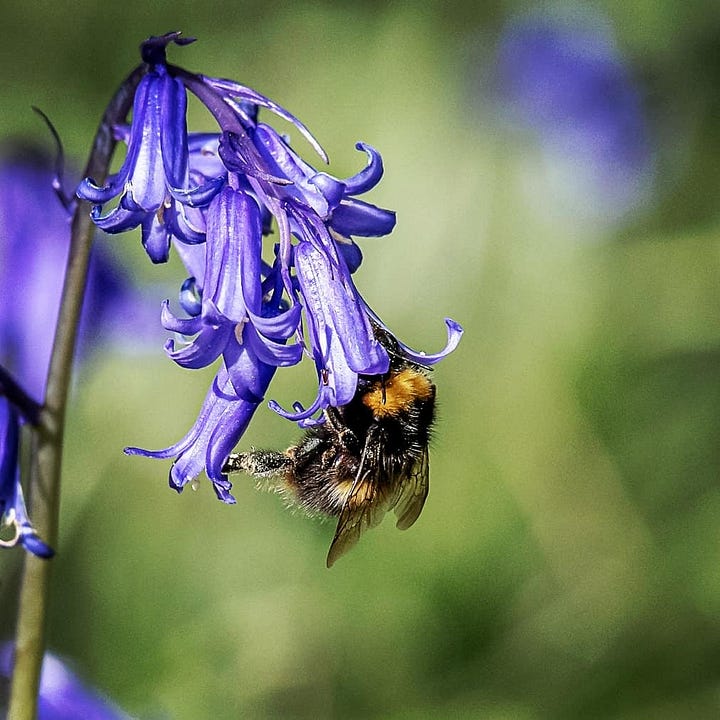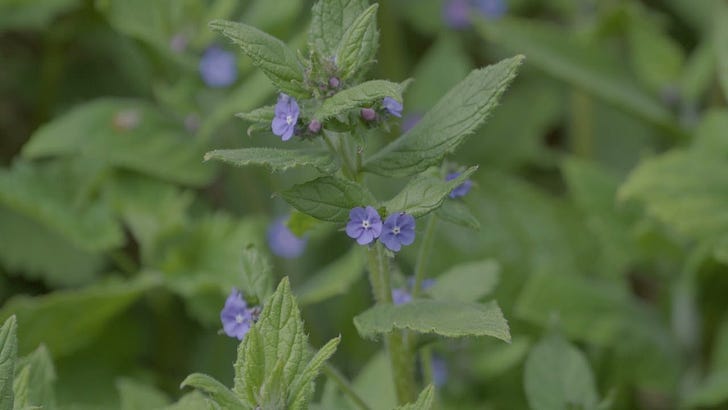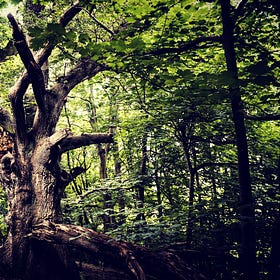Smaller-Scale Rewilding: A SHORTER Guide to Bringing Nature Back, Wherever You Are
Don’t let size limit your ambition! Learn how smaller-scale rewilding can make a big impact on local biodiversity. Get started today with our SHORT practical guide.
Many of you told us how much you loved our full guide to smaller-scale rewilding which we have been serialising the last few months. You also told us that you would love to have a small, pocket sized version for you to cherish, share and use out there rewilding your garden! Here it is.
Introduction: Why Small Really Matters
For decades, rewilding has been associated with big landscapes - Yellowstone’s wolves, Knepp Estate in England, or key projects in the Scottish Highlands. These projects capture imagination because they demonstrate the breathtaking power of nature when given room to recover. But there’s a common misconception here: that rewilding is only possible on a grand scale, requiring thousands of acres, deep pockets, and years of planning.
This is where smaller-scale rewilding comes in. Defined here as rewilding on plots under 250 acres - and often much smaller - this approach recognises that biodiversity recovery can, and must, happen everywhere: in gardens, school grounds, road verges, farms, and even balconies.
The First LettsSafari Park
We’re excited about this mini documentary about LettsSafari’s first safari park at Mamhead Park South - with Reflexeye. It is a powerful introduction to LettsSafari, and an early documentary about smaller-scale rewilding.
Why? Because most of us don’t live next to vast wildernesses. We live in cities, towns, villages, or farmland-dominated regions. If rewilding is to succeed as a global movement, it has to be practical and local - a patchwork of many small wild spaces that, together, stitch back the web of life.
This is the vision behind LettsSafari, pioneers of smaller-scale rewilding. Through their projects, writing, and subscription community, they demonstrate that ecological restoration can be democratic: something everyone can take part in, no matter how much land (or balcony space) they own.
This article (taken from our full guide to smaller-scale rewilding) explores how smaller-scale rewilding works, what habitats you can create, which plants and animals make it thrive, and how LettsSafari’s approach can inspire a mass-market movement of everyday rewilders.
What Is Smaller-Scale Rewilding?
At its simplest, rewilding means stepping back and letting nature lead. It’s about reducing control, embracing messiness, and trusting that natural processes - growth, predation, decay, succession - will shape healthier ecosystems than we can design.


Smaller-scale rewilding applies these ideas to projects under 250 acres. That might include:
A suburban garden left partly unmown, buzzing with bees.
A corner of farmland turned to scrub for nesting birds.
A community park with a wildflower meadow instead of mown grass.
An allotment pond full of newts and dragonflies.
A city development with rain gardens and native trees woven in.
The scale doesn’t matter. What matters is the principle: creating spaces where nature can breathe. Even tiny projects provide stepping-stones for wildlife across landscapes. In urban areas, these become lifelines for pollinators and birds, connecting isolated green patches into a larger web.
And there’s another benefit: smaller projects are often more personal, visible, and inspiring. A wild corner in your garden or a scruffy hedgerow in a park isn’t abstract conservation - it’s something you see and feel every day. That direct connection can spark bigger change.
Why Smaller-Scale Rewilding Works
Biodiversity at the Edges
Ecologists have long observed that edges - the margins between habitats - host the richest variety of species. Smaller-scale rewilding naturally creates many such edges: where grass meets scrub, water meets woodland, hedge meets field.Local Species First
Small projects thrive when planted with native species adapted to local soil and climate. These are easier to grow, more resilient, and instantly useful to local wildlife.Messiness Is Habitat
Where traditional gardening tidies away dead wood, weeds, or fallen leaves, rewilding recognises their value. A log pile becomes a beetle hotel; a nettle patch is food for butterflies, and leaves bring nitrogen to the soil.Scalability
Smaller spaces are easier for individuals, schools, or councils to manage. One garden rewilding may seem insignificant, but multiplied by millions, they form an ecological revolution.
Where You Can Rewild: Practical Settings
1. Garden-Scale Rewilding
Your own garden, no matter how small, might be the easiest place to start. Key actions include:
Lawn liberation: Stop mowing all or part of the lawn. Let grasses and wildflowers flower and set seed.
Plant native shrubs and trees: Hawthorn, hazel, and dogwood feed birds and insects.
Add water: Even a small pond or rain barrel attracts dragonflies, frogs, and birds.
Let weeds be wildflowers: Clover, dandelion, and nettle are vital pollinator plants.
Create messy zones: Log piles, compost heaps, or leaf litter nurture fungi and invertebrates.
How to Design Your LettsSafari Garden
Safari gardens are the future. A future that embraces rewilding and wildlife gardening - creating places that restore our depleted biodiversity. Spaces that remove carbon and clean the air. Havens for wildlife and nature. Here’s a simple blueprint for designing your very own LettsSafari garden.
2. Municipal Parks and School Grounds
Here, rewilding is about shifting a part of your grounds from manicured lawns and annual bedding plants to semi-wild habitats:
Wildflower meadows instead of short-mown fields.
Ponds, rain gardens, and wetland edges.
Native hedgerows rather than ornamental shrubs.
Interpretive signs so the public understands why these “messy” areas matter.
3. Smallholdings and Allotments
Land used for food can also host biodiversity.
Hedgerows and tree lines as wildlife corridors.
Scrub and rough grass margins around plots.
Natural pest control from encouraging frogs, bats, and ladybirds.
Agroforestry systems combining trees, crops, and wild areas.
4. Urban Verges and Vacant Lots
Roadside verges left unmown become pollinator highways.
Empty plots seeded with wildflowers create instant mini-meadows.
Rain gardens help manage stormwater while feeding biodiversity.
5. Corners of Farms
Unproductive field edges can be left for scrub or woodland.
Rewilded patches act as refuges for pollinators that spill into crops.
Ditches, ponds, or shelterbelts improve soil, water, and biodiversity.
The Microhabitats of Smaller-Scale Rewilding
Small-scale projects succeed by mimicking the diversity of natural habitats. Even in a quarter-acre plot, you can host a range of microhabitats, each with distinct ecological roles.
Wild Grasslands
How to create: Stop mowing, introduce native meadow seeds, mow once a year in September.
Benefits: Nectar for pollinators, hunting ground for owls, carbon storage.
Scrubland
How to create: Allow bramble, gorse, or hawthorn to spread; don’t over-manage.
Benefits: Nesting cover for birds, berries for mammals, messy but vital.
Woodland
How to create: Plant native trees in small clusters; let natural regeneration fill in.
Benefits: Shade, soil improvement, fungi, and bird habitats.
Wetlands and Waterways
How to create: Dig a pond, redirect rainwater, allow seasonal flooding.
Benefits: Amphibians, dragonflies, water filtration, carbon storage.
Key Species: Plants, Trees, and Wildlife
Smaller-scale rewilding works best when it supports a self-sustaining web of life.
Plants and Trees
Trees: Oak, birch, willow, hazel, hawthorn.
Shrubs: Dog rose, blackthorn, elder.
Wildflowers: Oxeye daisy, knapweed, scabious, marjoram.
Grasses: Meadow foxtail, fescues, red clover.
Planting Trees For Life at LettsSafari Parks
The LettsSafari team have been busy planting trees over the last couple of weeks. The Autumn is generally the best time of year for tree planting, particularly given our approach to zero watering. Over 60 new sapling, cuttings and re-plantings have created four new copses in Dawlish Park and at Devon’s Capability Brown gardens.
Wildlife
Pollinators: Bees, hoverflies, butterflies, moths.
Amphibians: Frogs, toads, newts.
Birds: Sparrows, wrens, owls, kestrels.
Mammals: Hedgehogs, bats, foxes (in rural/urban edges).
Decomposers: Beetles, worms, fungi.
Keep reading with a 7-day free trial
Subscribe to LettsSafari+ to keep reading this post and get 7 days of free access to the full post archives.







